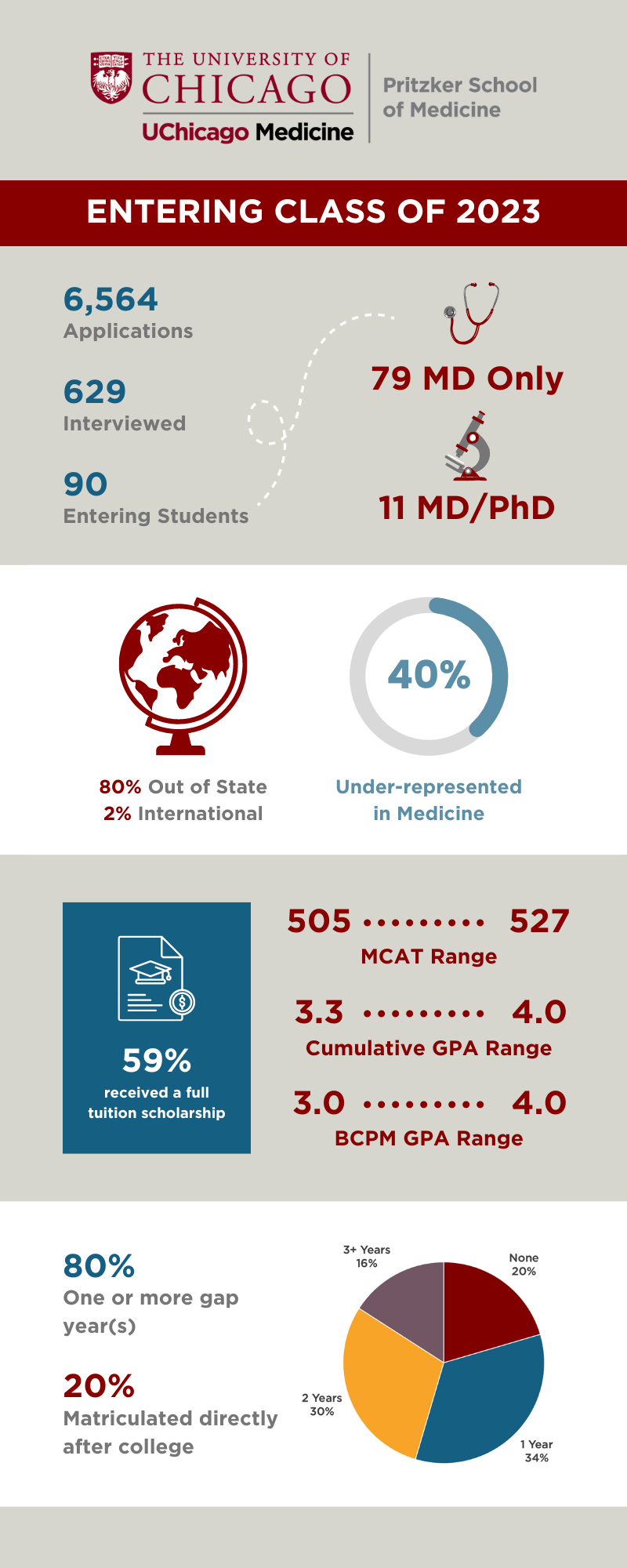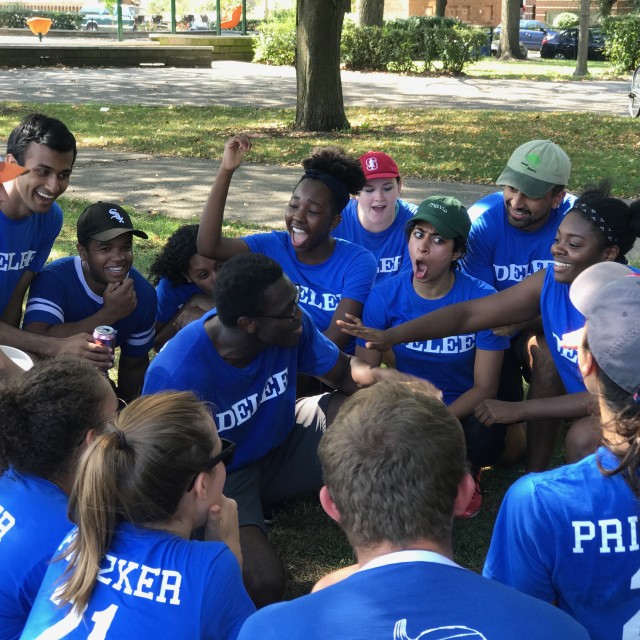

Admissions
Entering Class Profile
At the University of Chicago Pritzker School of Medicine, our entering class of students represents the infinite potential of future U.S. healthcare providers.
The 90 students who make up our entering class represent 52 different colleges and universities. They have pursued courses of study and academic interests in diverse disciplines including the biological and physical sciences, economics, creative writing, political science, and more.
80% took one or more years between receiving their undergraduate degree and beginning medical school, in pursuits as varied as teaching, graduate degrees, scribing, professional athletics, and research.
Learn more about our class below, and browse our student profiles to learn more about the student experience at Pritzker.
Entering Class Demographics
-
40%
Underrepresented in Medicine
-
80%
Out of State
-
2%
International
-
80%
One or more gap year(s)
-
79
MD Students
-
11
MD/PhD Students
Why Pritzker?
The culture came true in a way that is so much deeper than I initially imagined. Students are deeply supportive of each other. No matter where you are coming from or who you are, people want to support you in your interests and passions. ”
The Pritzker School of Medicine stood out to me as a place I felt I could grow most as a physician and a scientist. The culture stood out to me with each individual I interacted with: from the medical students to the faculty. The opportunity to be here at a pivotal time with the reintroduction of the Trauma 1 center gave me the feeling that I could truly reach out and impact the South Side community directly as a volunteer. Moreover, the research faculty here is absolutely outstanding, and I look forward to working on an impactful project that may lead to advances to human health. Ultimately, I felt like Pritzker really cared about me as a potential student, and that feeling has proven to be true in my time here. ”
Pritzker's commitment to diversity in all forms and at all levels was extremely refreshing to me. Many schools I interviewed at talked about inclusion efforts, but to come here and meet students with such varied life experiences who genuinely wanted to learn from and advocate for groups different from their own was amazing. This is even reflected in the administration at Pritzker; I cannot think of another school I interviewed at where I saw as many women and people of color in leadership positions. Just from these initial observations, I could tell that Pritzker was a place that knows that medicine must be inclusive of people from all walks of life, especially those that are typically marginalized. ”